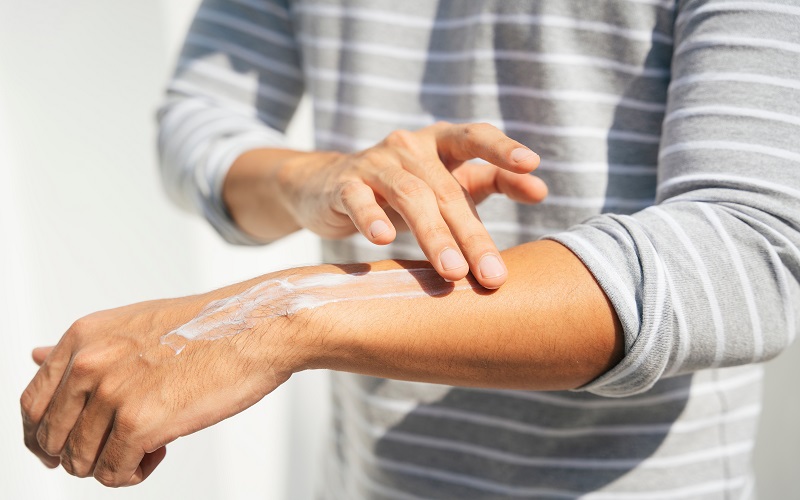
by Brian Kumasaka, MD, Valley Medical Center’s Dermatology Clinic
Exposure to ultraviolet radiation from the sun, also known as UV, is the leading cause of skin cancer. There are two types of UV radiation:
- Ultraviolet A. UVA radiation can pass through glass. Research suggests that it may:
- Cause premature aging and wrinkling of the skin.
- Play a role in causing basal cell carcinoma, squamous cell carcinoma and melanoma.
- Ultraviolet B. UVB does not pass through car windows or other types of glass. UVB radiation:
- Is more closely linked with the development of skin cancer and melanoma.
- Causes sunburn.
Protecting your skin from both UVA and UVB radiation is important.
Sunscreen is your first line of defense against UVA and UVB.
Sun damage builds up over time. It’s important to use sunscreen every day, even if it’s cloudy.
Here’s what to use and how to apply it the right way:
- Choose a broad-spectrum sunscreen that protects against both UVA and UVB radiation. Make sure it is water-resistant and has a sun protection factor, SPF, of 30 or higher. Other types of sunscreen may help prevent sunburn, but they will not protect against skin cancer.
- Use a lip balm or lipstick that contains sunscreen with an SPF of at least 30.
- Apply at least one ounce of sunscreen 15 to 30 minutes before going outdoors. What does one ounce look like? It might be more than you think—one ounce is enough sunscreen to fill a shot glass.
- Reapply sunscreen to your entire body every two hours. Reapply every hour if you are swimming or sweating.
- Sunscreen creams are better for dry skin. Gels are better for the scalp or hairy areas.
- Wear sunscreen year-round whenever you are outside.
- Do not use sunscreens that have expired.
Learn the shadow rule and more to give yourself the best protection against damaging rays.
- Limit sun exposure. The sun’s rays are the most intense between 10 AM and 4 PM. Practice the shadow rule: if your shadow is shorter than you, you should find shade. Always keep babies younger than 6 months old completely covered and in the shade.
- Pay attention to the UV index. This numbered scale measures how damaging exposure to the sun will be on a specific day. It is often included in the weather report. When the index is 10 or higher, people should try to stay indoors.
- Be careful around reflective surfaces. Water, snow and sand reflect the damaging rays of the sun and increase your risk of getting sunburned.
- Wear protective clothing and sunglasses. Make sure you have a long-sleeved shirt, long pants, and a hat that shades the face, neck and ears. Dark clothing with tightly woven fabric blocks more sun than white or loosely woven fabrics. For additional protection, look for clothing made with special sun-protective materials. Make sure your sunglasses have 99% to 100% UV absorption.
- Be aware of medication side effects. Some medications may make you more sensitive to the sun. These include specific types of antibiotics, anti-inflammatories, antifungals, blood pressure medications, and some types of chemotherapy.
- Avoid recreational sunbathing. Also, do not use sun lamps, tanning beds or tanning salons.
Dr. Kumasaka practices at Valley Medical Center’s Dermatology Clinic. Learn more about Dr. Kumasaka. Find out about dermatology services at our Dermatology Clinics in Renton and Covington. For questions or to make an appointment, call 425.690.3483
Content approved by the Cancer.Net Editorial Board, 09/2019

